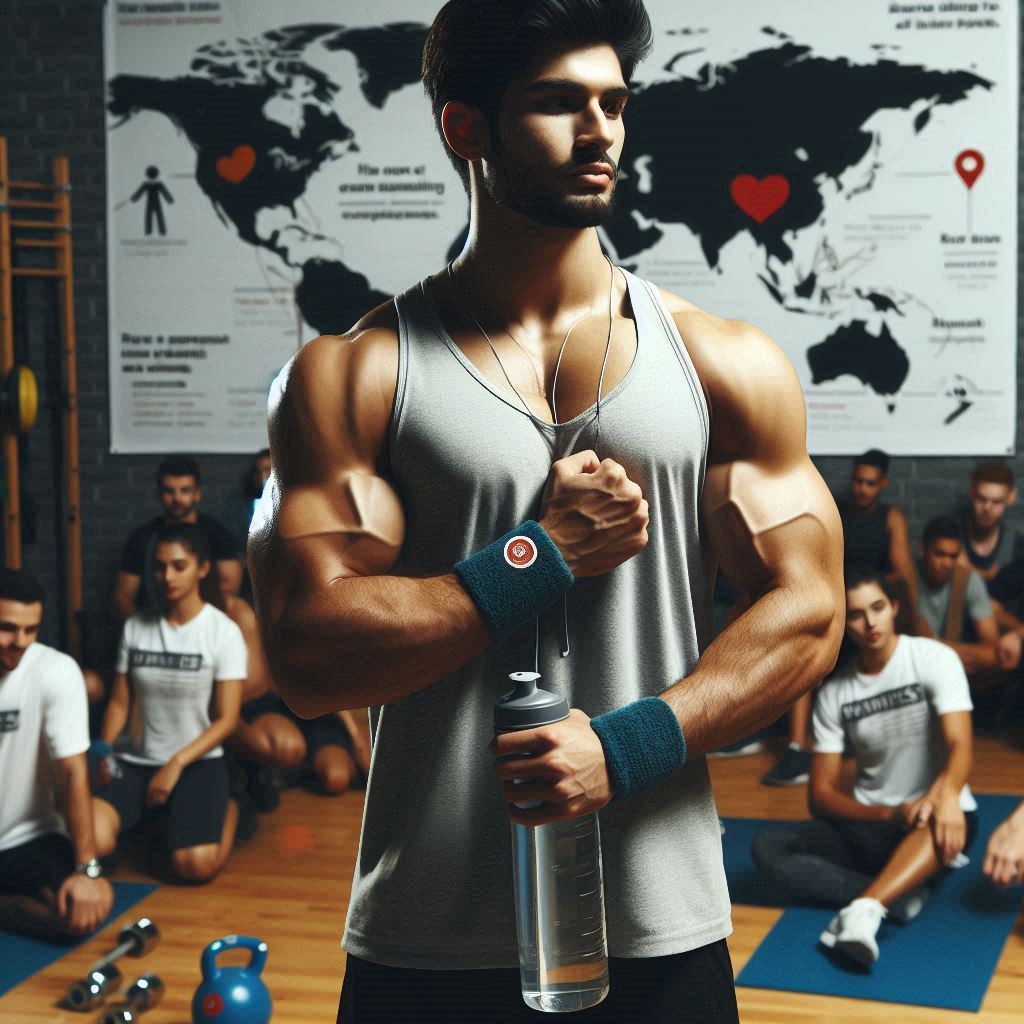In the modern world, fitness is often framed in the context of aesthetics, health, or personal growth. However, an increasingly powerful trend has emerged—individuals using their physical pursuits to raise awareness, drive fundraising, and support causes close to their hearts. This movement, often called “fitness for a cause,” blends personal transformation with collective impact. Whether it’s running marathons for cancer research, cycling across countries for mental health awareness, or organizing fitness challenges to fundraise for humanitarian aid, these stories show the profound intersection of endurance, empathy, and activism.
This guide dives deep into the inspiring journeys of individuals and communities who have channeled their fitness journeys into acts of purpose. Through their stories, we see that fitness doesn’t only transform bodies—it moves hearts, shifts public narratives, and mobilizes resources for change.
Running Toward Hope – Charity Marathons and Ultra-Endurance Feats
The Marathon That Became a Movement
In 2006, Terry Hitchcock, a 57-year-old widower and father of three, ran 75 marathons in 75 consecutive days. His cause? To raise awareness for single parents and their struggles, having experienced them firsthand after losing his wife to cancer. His journey across America wasn’t just about physical endurance—it was about spotlighting unseen heroes and bringing dignity to their hardships. Terry’s story inspired a documentary titled My Run, and his campaign led to new conversations about the role of community support in the lives of solo caregivers.
Team Hoyt: Love in Motion
Dick Hoyt, a retired lieutenant colonel in the Air National Guard, and his son Rick, who was born with cerebral palsy, became symbols of determination and compassion through their athletic partnership. Together, they participated in over 1,000 races, including marathons and triathlons. Dick would push, pull, and carry Rick through every event, showcasing the limitless strength of love and inclusion. Their mission? To raise awareness for disabled athletes and promote accessible fitness. Their decades-long campaign has left a legacy that’s still echoed in races across the world.
David Goggins and the Fight Against Childhood Illness
Former Navy SEAL and ultra-endurance athlete David Goggins transformed his incredible athletic pursuits into a vehicle for charity. In particular, he raised over $2 million for the Special Operations Warrior Foundation by running ultra-marathons, including the infamously difficult Badwater 135. Goggins, who overcame personal trauma and health challenges, became a symbol of mental toughness, using his physical challenges to highlight the grit required by families of terminally ill children and fallen soldiers.
Pedaling for Progress – Cycling Across Continents for a Cause
One Bike, One Dream: Hafiz’s Ride for Education
Hafiz Muhammad, a Pakistani cyclist, cycled over 5,000 kilometers across his country to promote girls’ education. Battling harsh weather, security risks, and media indifference, Hafiz’s journey became a viral story once local reporters picked it up. His commitment inspired NGOs to launch complementary programs, and several villages along his route saw increased school enrollment among girls.
Ride to Remember: Alzheimer’s Awareness Across Borders
Julie Moss, a triathlete whose emotional finish at the 1982 Ironman Hawaii became legendary, dedicated several of her later races to raising funds for Alzheimer’s research. Inspired by her mother’s diagnosis, she partnered with research foundations to turn her races into awareness campaigns. She wasn’t alone—across the globe, cyclists organized “Ride to Remember” events, where participants wear purple and share stories of loved ones living with dementia. These rides have raised millions and sparked legislative attention in the United States and Europe.
Cycling for Clean Water: The Blue Planet Rides
A team of environmental activists rode their bicycles from Berlin to Istanbul to draw attention to water scarcity and raise funds for clean water initiatives in sub-Saharan Africa. Over six weeks, they covered more than 2,400 miles, hosting community events and discussions in major cities along the way. Their campaign used social media, live GPS tracking, and vlogs to engage supporters. The funds raised were used to build solar-powered wells in Kenya and Nigeria, directly impacting over 20,000 people.
From the Mat to the World – Yoga, Pilates, and Group Fitness for Peace and Healing
Yoga for Refugees: Healing Beyond Borders
In 2017, a Syrian refugee named Rania started offering yoga sessions in a refugee camp in Greece. What began as small breathing exercises turned into full classes, helping traumatized individuals cope with anxiety, PTSD, and hopelessness. With the help of NGOs, “Yoga for Refugees” spread to camps across Europe. International yoga influencers joined the movement, raising funds for mats, clothing, and volunteer travel.
Yoga for peace has become a global symbol of healing. Annual events like “Global Mala,” initiated by Shiva Rea, raise thousands of dollars for UNICEF and other global organizations by uniting yogis in massive 108-sun-salutation events. These events emphasize collective intention, inner peace, and action.
Pilates with Purpose: Breast Cancer Awareness
Fitness trainer and breast cancer survivor Naomi Garcia started “Pilates for Pink” in collaboration with breast cancer foundations. Each October, she organizes donation-based Pilates events across major cities. Survivors, caretakers, and fitness enthusiasts gather for healing movement and storytelling. The campaign not only raises money for mammograms and screenings but also educates women on early detection through physical awareness.
CrossFit, Calisthenics, and the Rise of “Fitness Fundraising Challenges”
WODs for Warriors: CrossFit Meets Veterans’ Mental Health
The CrossFit community has long aligned itself with military and first responder values. One of the standout examples is “WODs for Warriors,” a national campaign that uses workouts-of-the-day (WODs) to raise money for veterans suffering from PTSD. Every Veterans Day, gyms around the world host special events where the physical challenge reflects the symbolic weight of sacrifice—21-minute AMRAPs (as many rounds as possible), 100 burpees, or heavy lifts in honor of fallen soldiers. These events create intense emotional bonds and drive donations for mental health treatment and rehabilitation.
Pull-Up for the Planet: Eco-Fitness on the Rise
Fitness influencer Akshay Mehta launched “Pull-Up for the Planet,” a 24-hour calisthenics challenge to raise awareness about climate change. For every pull-up completed and uploaded on social media using their campaign hashtag, sponsors donated $1 to reforestation efforts in India. The challenge drew participation from over 60 countries and was recognized by the UN Environment Program. Akshay’s use of social media gamification, challenges, and digital leaderboards exemplifies the modern convergence of activism and fitness.
Group Events and Mass Movements – Charity Through Community Workouts
Danceathons for Disaster Relief
Following the devastating earthquakes in Turkey and Syria, international Zumba instructors organized danceathons to raise relief funds. These high-energy events turned gyms and parks into spaces of solidarity. Livestreamed worldwide, these gatherings raised not only money but morale. People from different faiths and backgrounds danced together for the cause, sending a powerful message of unity.
Virtual 5Ks and Global Step Challenges
During the COVID-19 pandemic, many charities struggled to engage donors. Enter the era of virtual runs and step challenges. Apps like Charity Miles allowed users to donate to causes by logging their steps. Campaigns like “Miles for Meals” supported food banks, while “Walk for Water” simulated the distance many children walk daily for clean water.
One particularly successful story is that of “Steps for Smiles,” where every 10,000 steps logged went toward cleft palate surgeries for children in developing countries. Organized entirely online, this campaign gathered over 200,000 participants in its first year.
Children and Teens Making a Difference Through Fitness
Kids Climb for Kindness
In Colorado, a group of middle schoolers climbed Mount Elbert, the state’s highest peak, to raise funds for pediatric cancer. The campaign, called “Kids Climb for Kindness,” partnered with St. Jude Children’s Research Hospital. These young climbers trained for months, learning not only physical endurance but also empathy and purpose. Their journey inspired media attention and an outpouring of donations from local businesses.
Teens Organize Local Fitness Fairs
A high school in New York turned its annual sports week into a charity fitness fair. Each game, class, or competition raised funds through entry fees and pledges. The money went to mental health resources for students, and the initiative later spread to other schools through student advocacy. Teen-led fitness movements now frequently feature in community service projects and grant applications.
Corporate Wellness for a Cause – Businesses That Combine Fitness and Philanthropy
10,000 Steps for Schools: Corporate Programs Go Public
Multinational companies have begun incorporating philanthropy into their wellness programs. One standout initiative is “10,000 Steps for Schools,” a challenge hosted by a Fortune 500 company where employees compete to meet daily step goals. Every milestone met unlocked donations to fund school meals and education kits in underprivileged communities. Other firms followed suit, creating a model where internal fitness incentives directly translate into external impact.
Matching Fitness with Giving
Companies like Salesforce and Nike now match employee workouts with donations. For every yoga session, 5K, or gym check-in logged via corporate fitness apps, the company donates to a charity of the employee’s choice. This gamified structure boosts employee engagement, wellness, and social responsibility all at once.
The Science and Psychology of Fitness Altruism
Beyond anecdotal inspiration, science supports the power of altruistic fitness. Studies show that people are more likely to stick with a fitness regimen if it’s tied to a cause (Deci & Ryan, 2000; Snyder & Omoto, 2009). The blend of intrinsic (health, happiness) and extrinsic (helping others) motivations increases adherence, mental well-being, and social engagement.
Neuroscientific research also highlights how purposeful physical activity releases dopamine and oxytocin, reinforcing both personal satisfaction and prosocial behavior (Zak, 2011). In essence, giving while moving wires the brain for happiness and health.
Conclusion
Fitness for a cause is more than a trend—it is a philosophy. It represents a world where strength isn’t only measured in reps or miles but in lives impacted, funds raised, and hope restored. Each story in this article echoes a singular truth: when movement meets meaning, the impact is exponential.
From lone marathoners to corporate teams, from refugee camps to schoolyards, these changemakers show us that the human body—when fueled by compassion—can do more than transform itself. It can transform the world.
SOURCES
Deci, E. L., & Ryan, R. M. (2000). Intrinsic and extrinsic motivations: Classic definitions and new directions. Contemporary Educational Psychology, 25(1), 54-67.
Zak, P. J. (2011). The physiology of moral sentiment: An fMRI study of economic decision-making. Annals of the New York Academy of Sciences, 1239(1), 277–289.
Snyder, M., & Omoto, A. M. (2009). Who gets involved and why? The psychology of volunteerism. In S. J. Lopez (Ed.), The handbook of positive psychology (pp. 377–385). Oxford University Press.
HISTORY
Current Version
July 2, 2025
Written By:
SUMMIYAH MAHMOOD








Leave a Reply